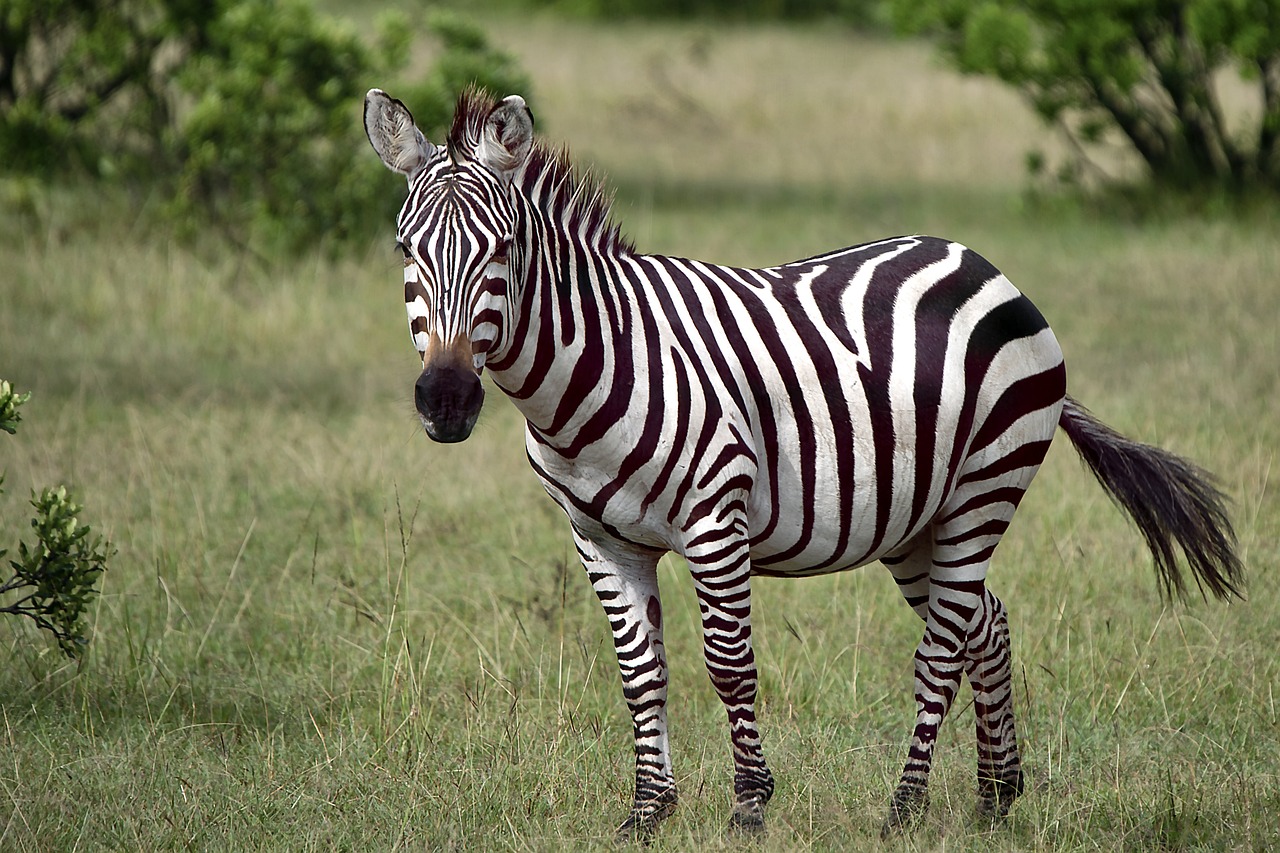Zebras are among the most recognizable animals on the planet, their striking black and white stripes capturing the imagination of people of all ages. These remarkable patterns are not just for show; they play a crucial role in the survival of zebras in the wild. This article explores the intriguing aspects of zebras, from their physical characteristics to their relationship with humans, providing a comprehensive look at one of Africa’s most iconic species.
Characteristics / Physical Description
Zebras are generally about 3.5 to 5 feet tall at the shoulder and can weigh up to 900 pounds, depending on the species. Their most distinctive feature is undoubtedly their bold stripes, which vary between species. Some zebras have stripes that wrap around their bellies, while others have a more irregular pattern. The stripes are believed to serve several functions, including camouflage, confusing predators, and regulating body temperature. The pattern of each zebra’s stripes is unique, much like human fingerprints.
Taxonomy and Classification
Zebras belong to the genus Equus, which also includes horses and donkeys. There are three main species of zebra: the Plains Zebra (Equus quagga), the Mountain Zebra (Equus zebra), and the Grevy’s Zebra (Equus grevyi). Each species has its own unique stripe pattern and habitat preferences, with subdivisions into several subspecies reflecting more specific adaptations.
Behavior and Social Structure
Zebras are highly social animals, typically seen in small harems consisting of one stallion and several mares and foals. These groups often come together to form larger herds for added protection against predators like lions and hyenas. Zebras communicate with each other through vocal calls and facial expressions, and they are known to form strong bonds with their herd members. Stallions are fiercely protective of their harems, and mare-foal bonds are particularly strong.
Habitat and Distribution
Zebras are found in various habitats across Africa, from the savannas and grasslands where Plains Zebras roam to the mountainous regions inhabited by Mountain Zebras. Grevy’s Zebras are adapted to semi-desert conditions and are mostly found in northern Kenya. Each species has adapted to its environment in ways that facilitate access to food, water, and shelter from predators.
Diet and Feeding Habits
Zebras are herbivores, primarily grazing on grasses, but they also eat leaves and bark. Their well-adapted digestive systems allow them to subsist on diets of lower nutritional quality than that necessary for other herbivores, which helps them survive in harsh conditions. They are constantly on the move for fresh grazing areas and water sources, making them a fundamental part of their ecosystems.
Breeding and Reproduction
Zebras have a gestation period of around twelve to fourteen months, after which a single foal is born. These foals can stand and run within an hour of birth, a crucial adaptation for survival from predators. The breeding season is generally year-round, but it can vary depending on the species and the environmental conditions.
Relationship with Humans
Historically, zebras have been hunted for their striking skins, and while they are not typically domesticated due to their unpredictable nature and difficulty to train, they have been captured and kept in zoos around the world. Conservation efforts vary by species; for instance, the Grevy’s Zebra is endangered, suffering from habitat loss and reduced access to water sources.
Evolutionary History
Zebras are part of the Equidae family, which evolved from small, multi-toed grazing animals into the large, single-hoofed animals we see today. Fossil records show that the zebra’s evolutionary lineage dates back over 55 million years, with the current species evolving around 4 million years ago. This long evolutionary history contributes to their resilience and adaptability.
Use as Research Animals
Zebras are not typically used in traditional research due to their specific needs and the difficulty in maintaining them in a controlled environment. However, they are often subjects of ecological and behavioral studies in the wild, helping scientists understand the dynamics of grassland ecosystems and the impact of human activity on native species.
Zebras are not just beautiful and iconic; their existence is crucial for the African savannas and the biodiversity of these ecosystems. Conservation efforts continue to be vital to ensure these animals thrive, maintaining the balance of their habitats and allowing future generations to marvel at their beauty and ecological importance.
#zebra #wildlife #conservation #AfricanWildlife #ecology #behavior #habitat #taxonomy #GrevysZebra #PlainsZebra

